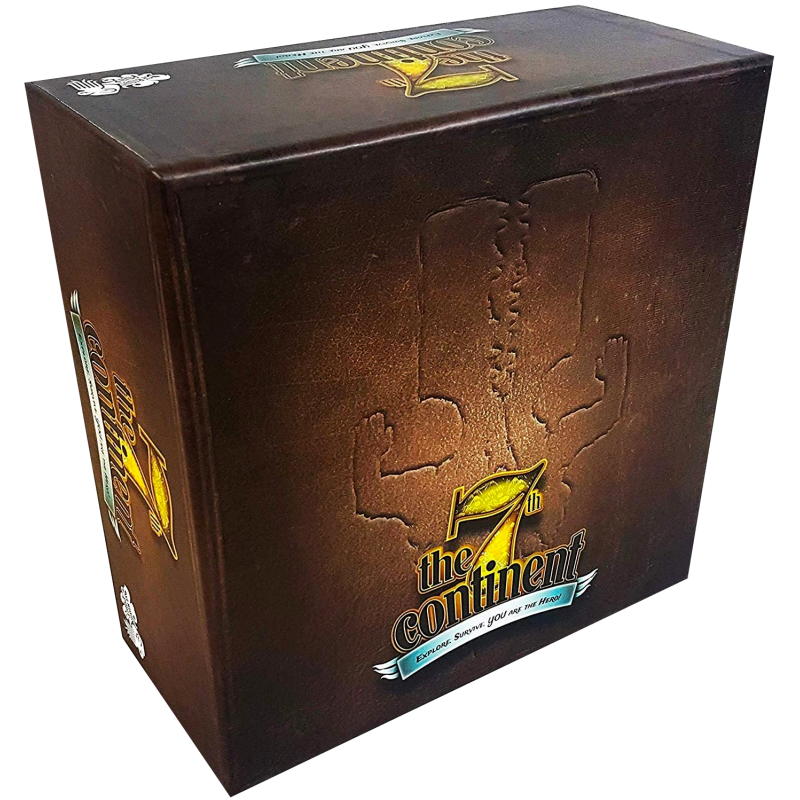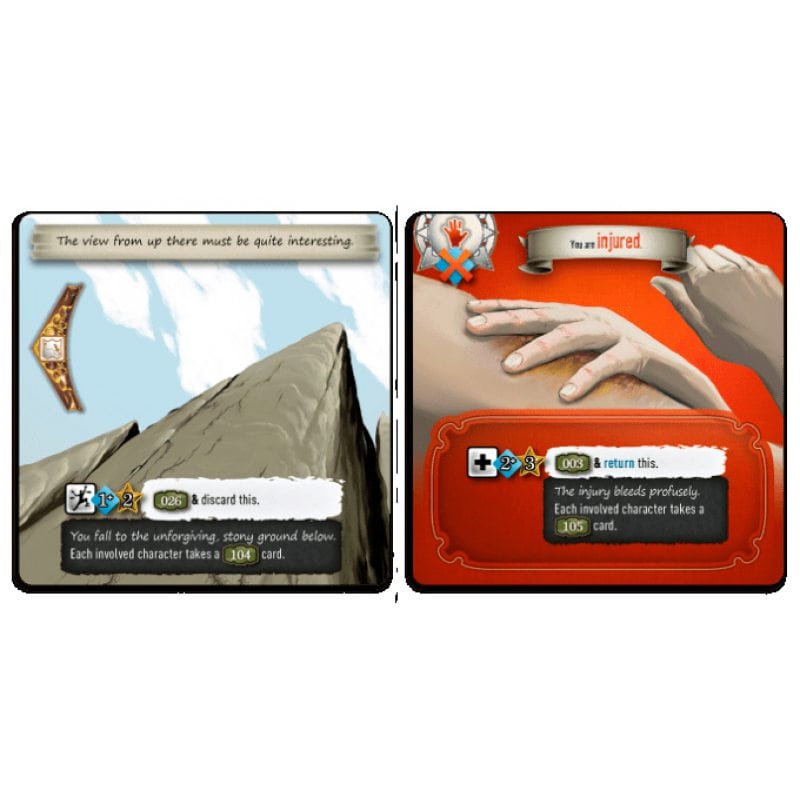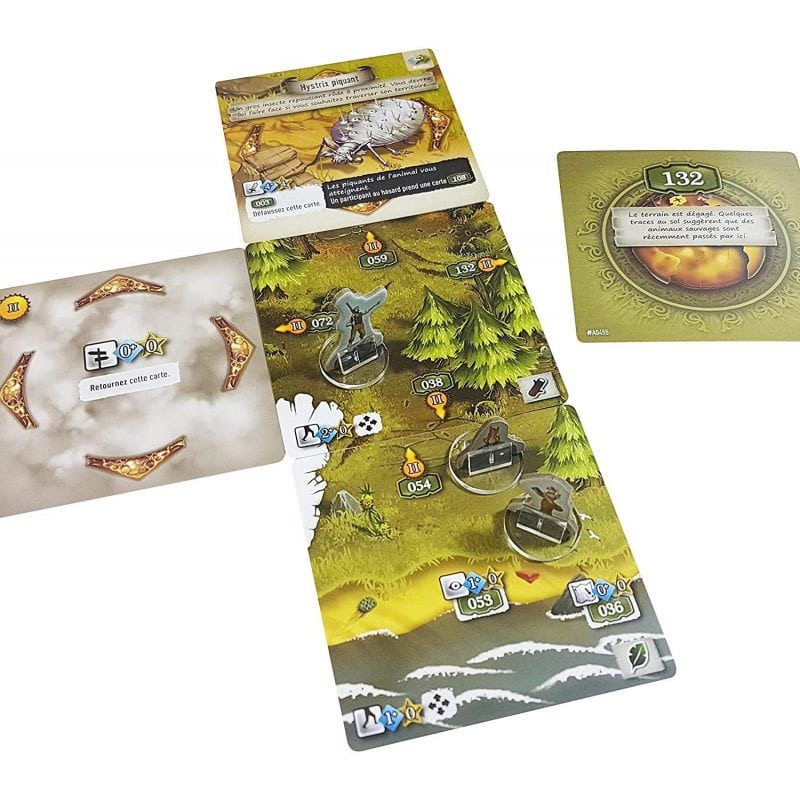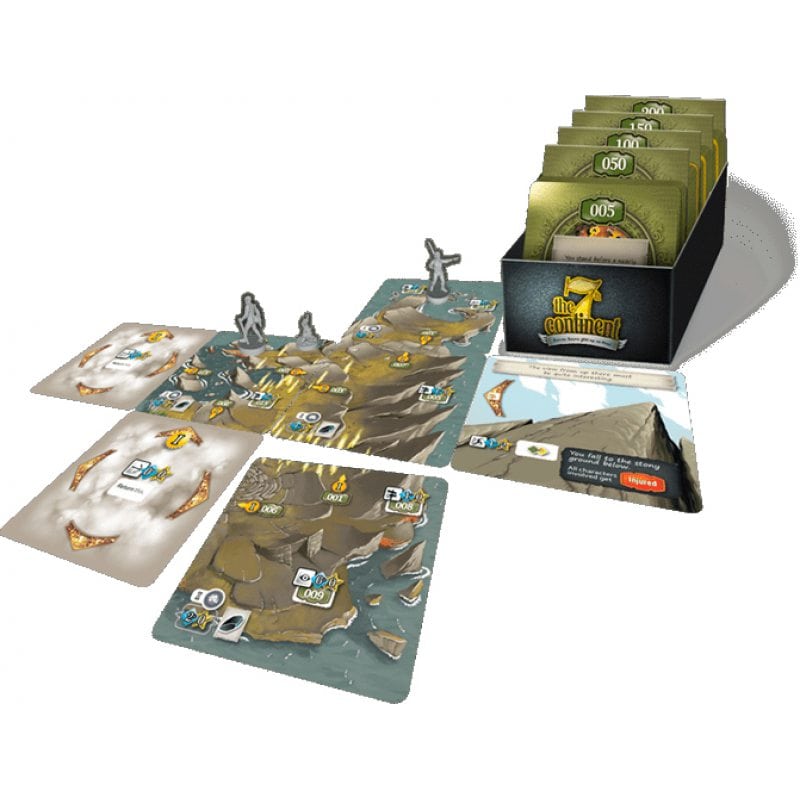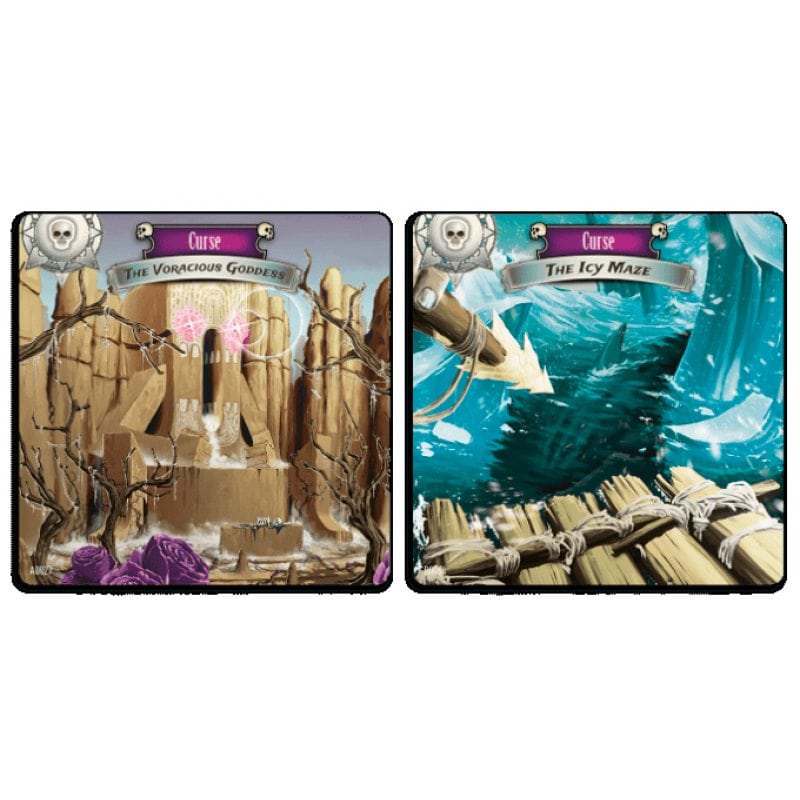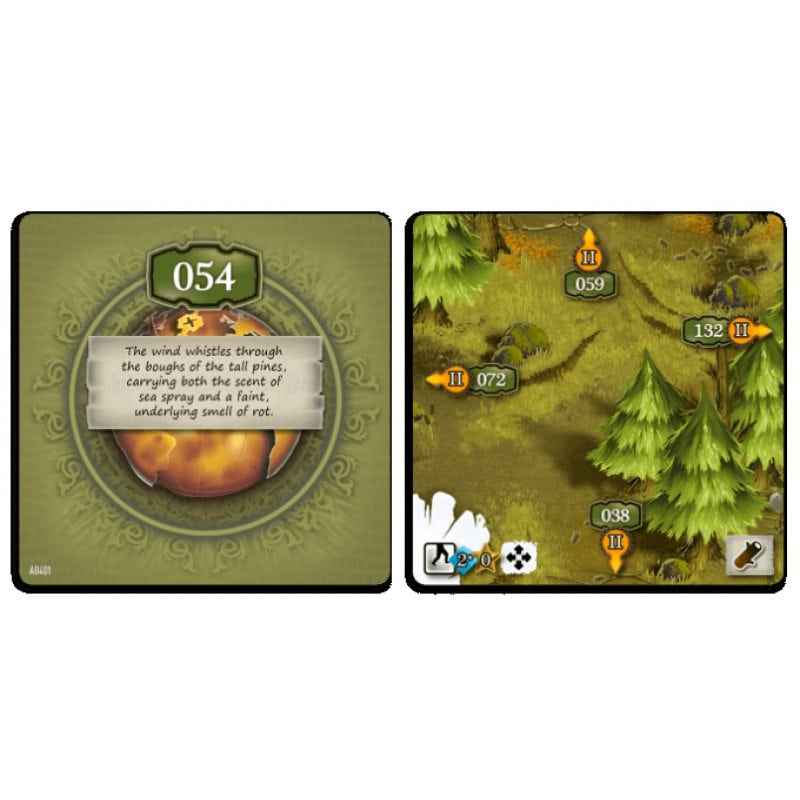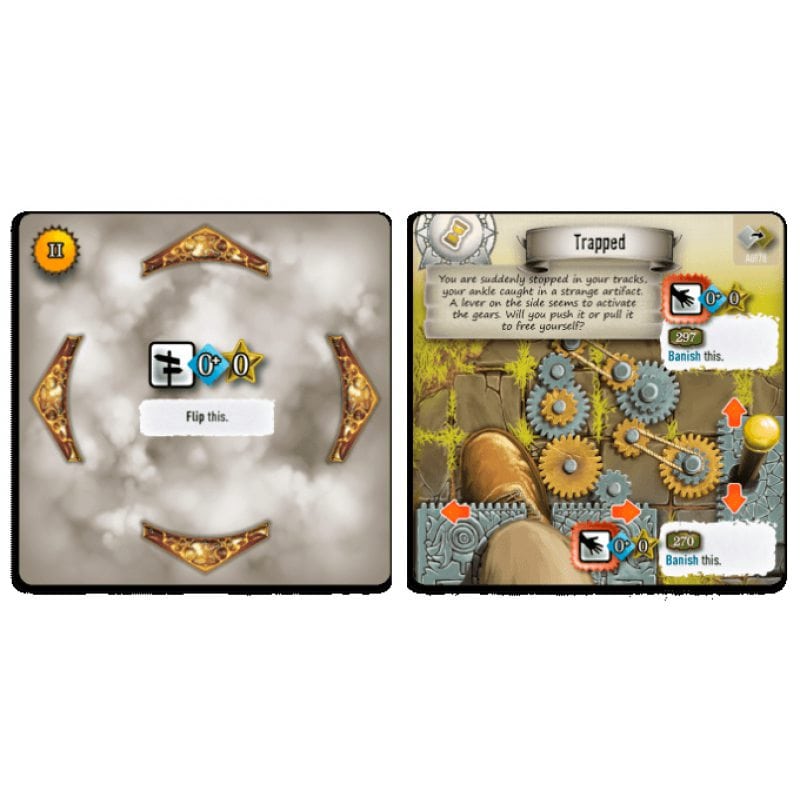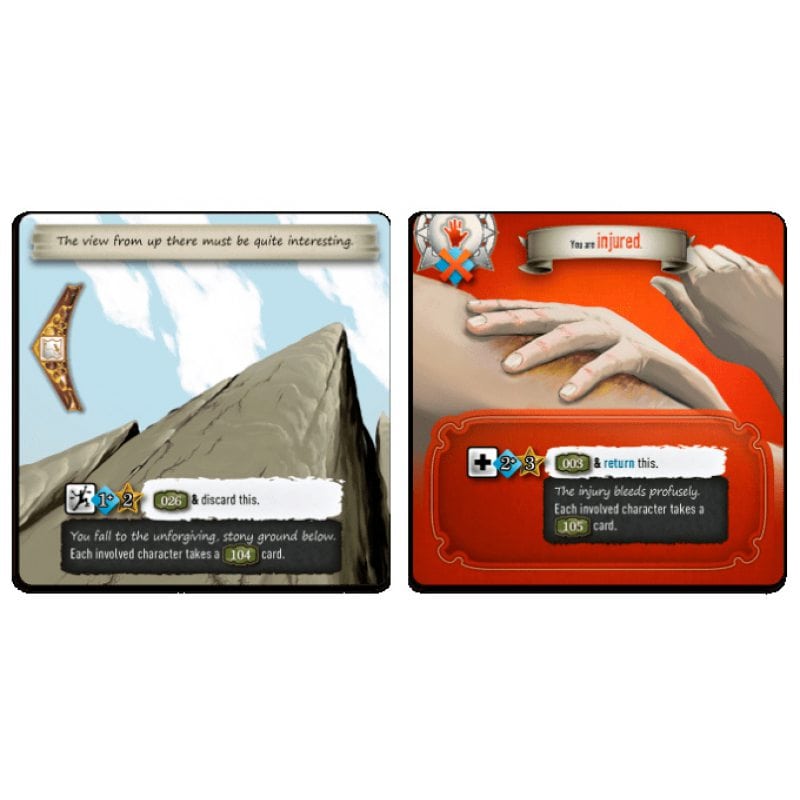| Board game | |
| Type | Adventures, Card, Cooperative, Fiction, For a gift, For experts, For one (Solo mode), For the whole family, For two, In English, Logical, Role Playing, Strategies, Super Hits, Survival |
| Publisher | Serious Plus (USA) |
| Game time (min) | 30+ |
| Number of players | 1 - 4 |
| Age (years) | 14+ |
| Language | English |
| Material | Paper, Cardboard, Wood, Plastic |
| Options | 849 cards divided into different "decks": 611 numbered adventure cards (green or gold backed) making up an adventure deck 122 exploration cards (with foggy back) 97 action cards (blue backed) 5 character cards bag and diary card 3 hint cards 10 save cards 5 explorers and 4 campfire figurines 8 six-sided dice serving as durability counters for items in inventory 2 storage trays and 34 dividers to make it easier to find any map which you need memo rules of the game |
Description
DESCRIPTION OF THE BOARD GAME 7TH CONTINENT: CLASSIC EDITION
It is a cooperative board adventure about research and survival, which is essentially reminiscent of a game book. The pages here have been replaced by square maps, and they make up a mysterious continent full of dangerous trials.
The connection is that players again go to the newly discovered lands to find the cause of the curse imposed on them and try to remove it. The members of the expedition will have not only to wool the continent, but also to get food, seek refuge, make weapons, fight with wild animals, as well as look for clues to help successfully complete the mission.
GAME PROCESS
Cards in the game are divided into three main types: locations, events and ideas. With locations clear, they form a playing field. Events are random tests and contacts that adventurers encounter during research. Ideas denote the knowledge, skills and memories of the heroes. They determine the success of the performance and are a source of useful items. In addition, the deck of ideas also acts as a timer-reserve of the health of the characters.
Each character has his own ability and a set of unique skills. Skills are mixed together with idea cards. In the same general "cauldron" are the cards of the curse chosen for the party.
The scenario map tells you exactly what the heroes need to find to get rid of the disease. In our case, it drew a schematic plan that must be followed to find the right idol.
After selecting the characters and reading their backgrounds, the figures are sent to the starting location, and the adventure begins. In principle, if all the cards are sorted in advance, it will take three minutes to prepare. You will have to tinker after the party, when you need to carefully arrange everything by the numbers back in the box.
The backbone of the process is extremely simple - we open locations and perform actions available on them. When laying out the new location in front of the arrows with Roman numerals immediately placed maps of events. They indicate the directions in which the characters can theoretically move forward. The number in the green box next to the arrow indicates the number of the location where the character will be, if you choose this route.
Scattered throughout the location are symbols of special actions, about 30 pieces: pick up, get out, look back, dig, attack, etc. Next to each such action are two numbers - the first means how many cards the player must draw from the deck of ideas, and the second - how many successes he needs to score on these cards to successfully complete the action.
Successes are marked with asterisks on the left side of the idea cards. It is not so difficult to get the required number of stars, as most often the limit of the selected cards is not limited (only the minimum is specified). But, as I said, a deck of ideas is a team's health reserve, so these cards need to be saved. If the deck is over, a new one is formed from the reset, but from that moment on, the first extracted curse card will complete the mission with a failure.
If you successfully influence the location, you can find food, secret trails or open access to new activities. And you can run into trouble. If a player hoped for success and did not get the required number of stars, then his ward is usually punished with a negative status, which often accelerates the depletion of a vital deck.
The player has the right to keep one of the ideas extracted during the test. This can be a useful property or an object that can be made later.
Crafting items will also have to be paid for by dropping ideas cards, but the right amount will help reduce the resources available at the character's location. Suppose you can make a shovel out of stone and a bamboo stick. As a homemade thing, it is not very reliable, so it has a number of uses, which is noted by the usual hexagon. Items of the same type can be slipped under each other, summing up their shelf life and effects.
Useful properties and items are simply necessary for a successful passage, as they allow you to draw fewer ideas cards during these special actions, plus they give extra stars by themselves.
In addition to arrows and action icons, illustrations can provide important information to players. For example, traces of a wild beast that hint at potential prey, or hidden numbers that indicate the number of a secret location. To detect the latter, the kit even includes a special magnifying glass.
The locations themselves are drawn great. Moreover, they all add up to finished landscapes. Everything looks just fine. In general, when it comes to design, only the portraits of the heroes stand out a bit, they are too simple.
As for survival, it is associated with the restoration of the health of the heroes. If they manage to get food, start a fire or find a safe haven, it will allow you to return a few cards from the reset back to the deck and thus continue the adventure.
There is also such a thing as experience. It is given in case of overcoming certain tests. Experience points can be spent on advanced skills.
In principle, all the rules. We actively explore, hang out with all sorts of useful things and do not forget about food and rest. And so, slowly, following the clues, we move towards the cherished goal.
Equipment The 7th Continent: Classic Edition (eng) (What in the box?):
849 cards
divided into different "decks": 611 numbered adventure cards (green or gold backed)
making up an adventure deck
122 exploration cards (with foggy back)
97 action cards (blue backed)
5 character cards
bag and diary card
3 hint cards
10 save cards
5 explorers and 4 campfire figurines
8 six-sided dice
serving as durability counters for items in inventory
2 storage trays and 34 dividers
to make it easier to find any map
which you need
memo
rules of the game
You can buy the board game The 7th Continent: Classic Edition (eng) at the Lelekan online store.
You can place an order on our site by adding the product to the "Cart" or by calling (097) 82 47 182, (093) 82 47 182 .
Free delivery all over Ukraine when ordering from 2000 UAH.
We ship on the day of the order all over Ukraine when ordering up to 16oo
Buy The 7th Continent: Classic Edition (eng) in Lviv, Kiev, Kharkiv, Dnipro, Odessa, Lutsk, Uzhgorod, Mukachevo.
Also to your attention club and player of board games. Board game rentals in Lviv
Сьомий континент
Reviews (0)
Tags: Games in english,With cards,Wooden

